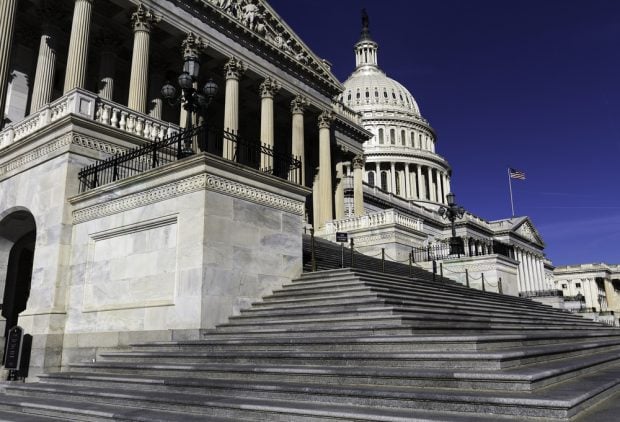Credit union trade groups praised the Treasury DepartmentTuesday for its regulatory recommendations governing financialinstitutions, but one lobbyist said that personnel changes may beneeded before they can be implemented.
|“It’s reflective of the input that we and…credit unions gaveTreasury,” said Ryan Donovan, CUNA’s chief advocacy officer.
|Donovan said CUNA is pleased with such proposals for NCUA torevise risk-based capital, change to the exam cycle and call reportrules and changes proposed for the CFPB.
|And while it may take legislation to institute some of thechanges, some can be done by the agencies. “There is a great dealof policy that can be done through the regulatory process,” hesaid.
|Donovan added that the NCUA board would be more likely to adoptsome of the recommendations once the board is controlled by TrumpAdministration nominees. The board currently has one vacancy andTrump can choose a Republican for that seat.
|And some of the changes are proposals that CFPB Director RichardCordray could institute himself, although he is likely to do so.Those changes may have to wait for a Trump-appointed director.
|NAFCU also praised the Treasury report.
|"While there is substantial work that remains ahead, NAFCU looksforward to building off of the groundwork laid by Treasury'srecommendations to strengthen credit unions and the communitiesthey serve," NAFCU President/CEO B. Dan Berger added.
|NAFCU officials said that they are pleased with severalproposals: plans to revise risk-based capital requirements,providing an examination cycle of at least 18-months and extendingthat to institutions above $1 billion in assets, and requiring theCFPB to issue guidance on its enforcement based on Unfair,Deceptive, or Abusive Acts or Practices.
|They also said they are pleased with the report’s call foradditional changes at the CFPB.
|The Treasury Department released its report Mondayevening. The recommendations include actions that agencies canimplement on their own, as well as a laundry list of changes thatwould require congressional approval.
|The CFPB clearly was a target for the Treasury Department, withthe report calling for it to be subject to the appropriationsprocess. In addition, the CFPB’s supervisory powers would beeliminated. Agency governance would be changed, with the CFPBgoverned by a director who could be removed by the president atwill or a five-member commission. Those changes would requirecongressional approval.
|The House last week passed a comprehensive Dodd-Frank overhaulplan that would basically neuter the CFPB.
|However, the Senate is still examining ideas for how to makechanges to Dodd-Frank, with the Banking Committee trying to work ona bipartisan basis. Since any congressional changes to the CFPBwould require 60 votes to pass the Senate, that chamber is likelyto call for more modest changes to the agency.
|Indeed, Senate Democrats quickly condemned the Treasuryreport.
|“When Wall Street greed goes unchecked, American taxpayers andworking families pay the price,” said Senate Banking Committeeranking Democrat Sherrod Brown of Ohio. “Too many hardworkingAmericans still haven’t fully recovered from the financial crisis,and Washington should be focused on protecting them by holding WallStreet accountable, not doing its bidding.”
||Brown said he is ready to work with Republicans on changes tothe financial regulatory regime, but is unwilling to give WallStreet a “free pass.”
|He also attacked the Treasury Department for having met with 244banking representatives and only 14 consumer groups, as it preparedthe report.
|Another Senate Democrat, Elizabeth Warren of Massachusetts alsorejected the Treasury report.
|"This report calls for radical changes that would make it easierfor big banks to cheat their customers and spark another financialmeltdown,” she said.
|But in a sign that bipartisanship may prove elusive in theSenate, Banking Chairman Mike Crapo of Idaho praised the Treasuryrecommendations.
|“The report includes reasonable and meaningful recommendationsto the existing, and all too often, one-size-fits-all regulatorylandscape,” he said. “While I am still going through the report, Iam encouraged by its recognition that rules need to be bettertailored and look forward to working with my colleagues to passbipartisan legislation, where required, to address many of thereport’s highlighted issues and recommendations.”
|A consumer group echoed the Democrats’ sentiments.
|The Treasury proposal pushes ideas that industry lobbyists havepushed since Dodd-Frank.
|“We need more effective regulation and enforcement, notrollbacks driven by Wall Street and predatory lenders,” shesaid.
Complete your profile to continue reading and get FREE access to CUTimes.com, part of your ALM digital membership.
Your access to unlimited CUTimes.com content isn’t changing.
Once you are an ALM digital member, you’ll receive:
- Critical CUTimes.com information including comprehensive product and service provider listings via the Marketplace Directory, CU Careers, resources from industry leaders, webcasts, and breaking news, analysis and more with our informative Newsletters.
- Exclusive discounts on ALM and CU Times events.
- Access to other award-winning ALM websites including Law.com and GlobeSt.com.
Already have an account? Sign In
© 2024 ALM Global, LLC, All Rights Reserved. Request academic re-use from www.copyright.com. All other uses, submit a request to [email protected]. For more information visit Asset & Logo Licensing.









